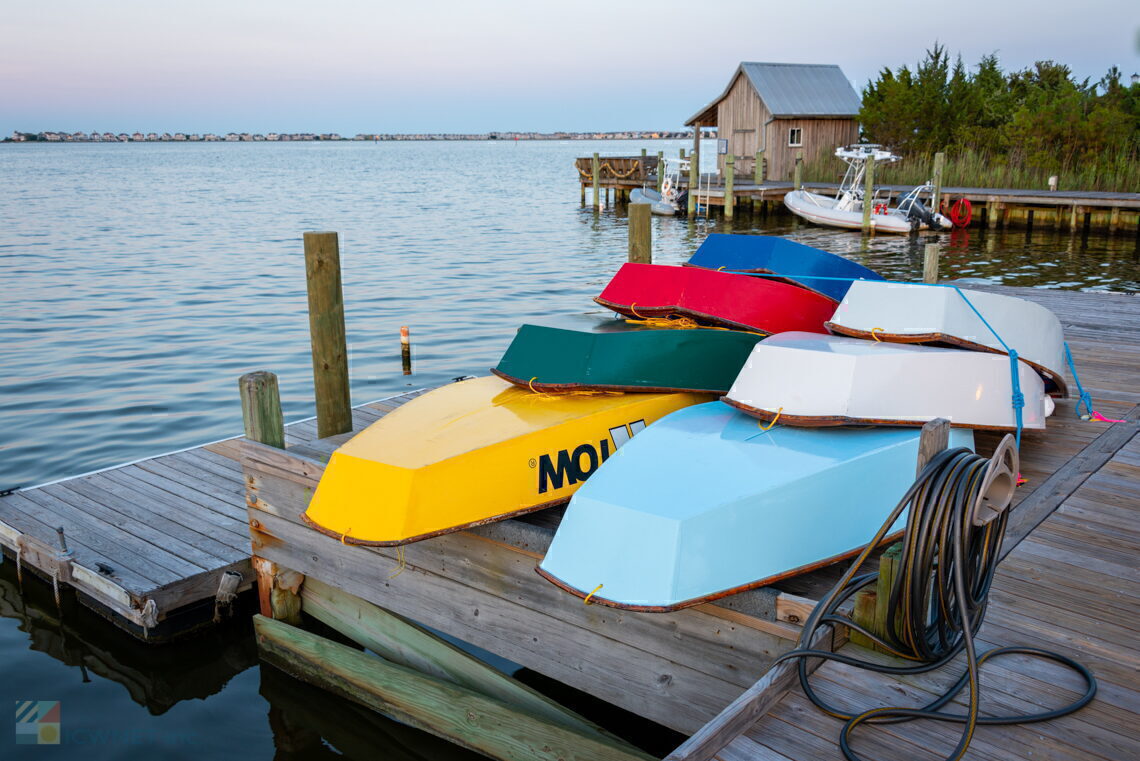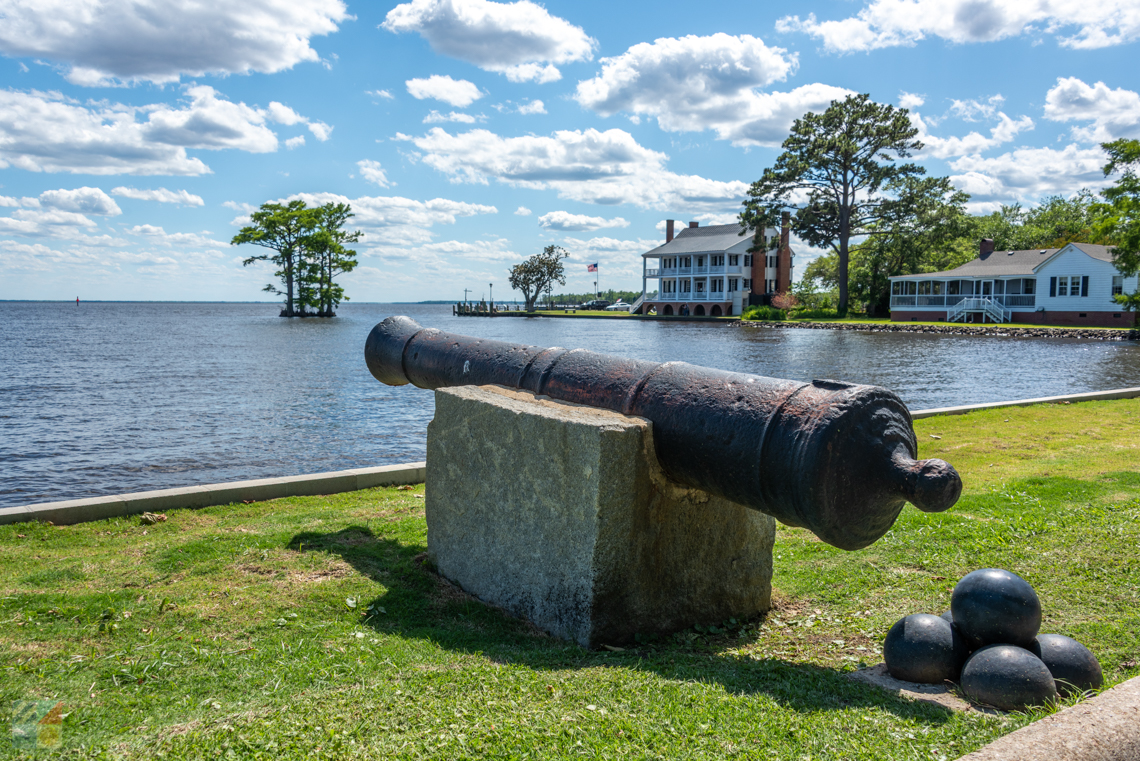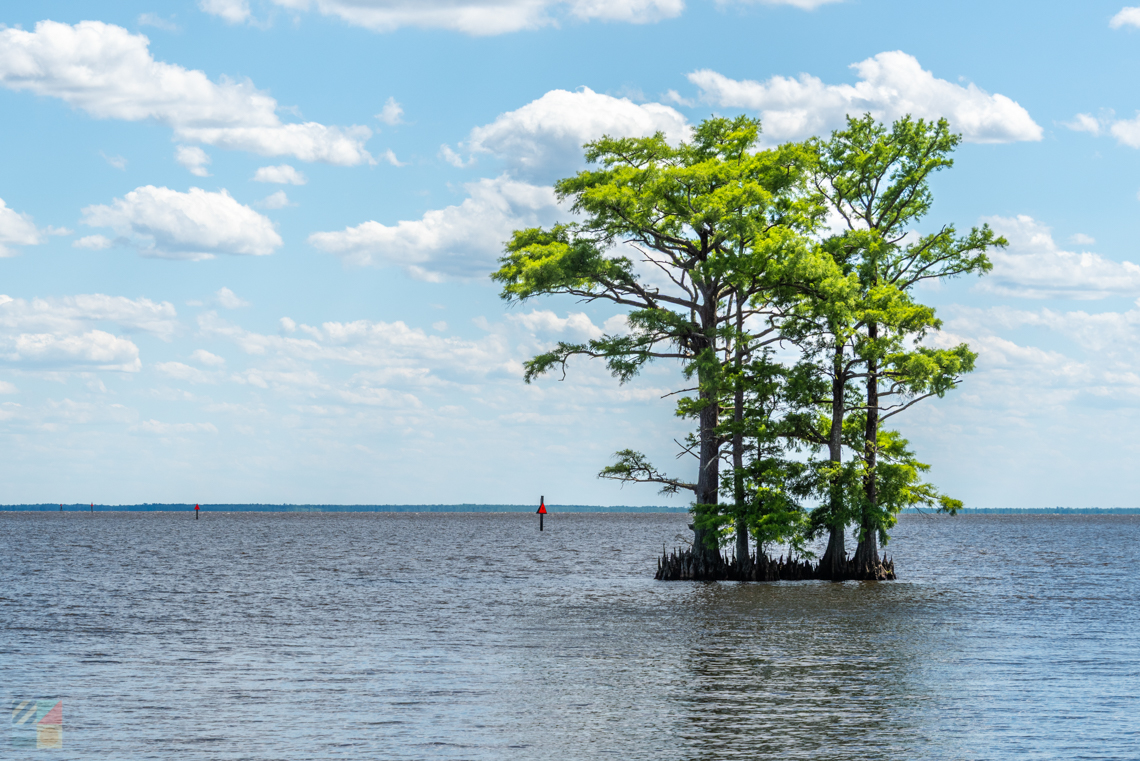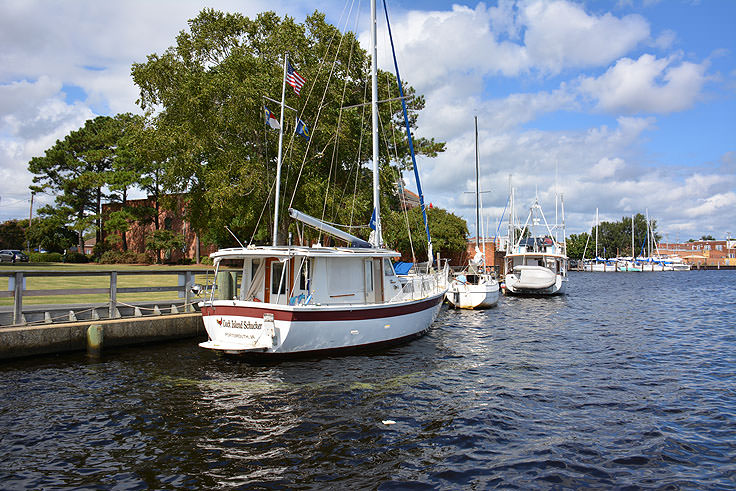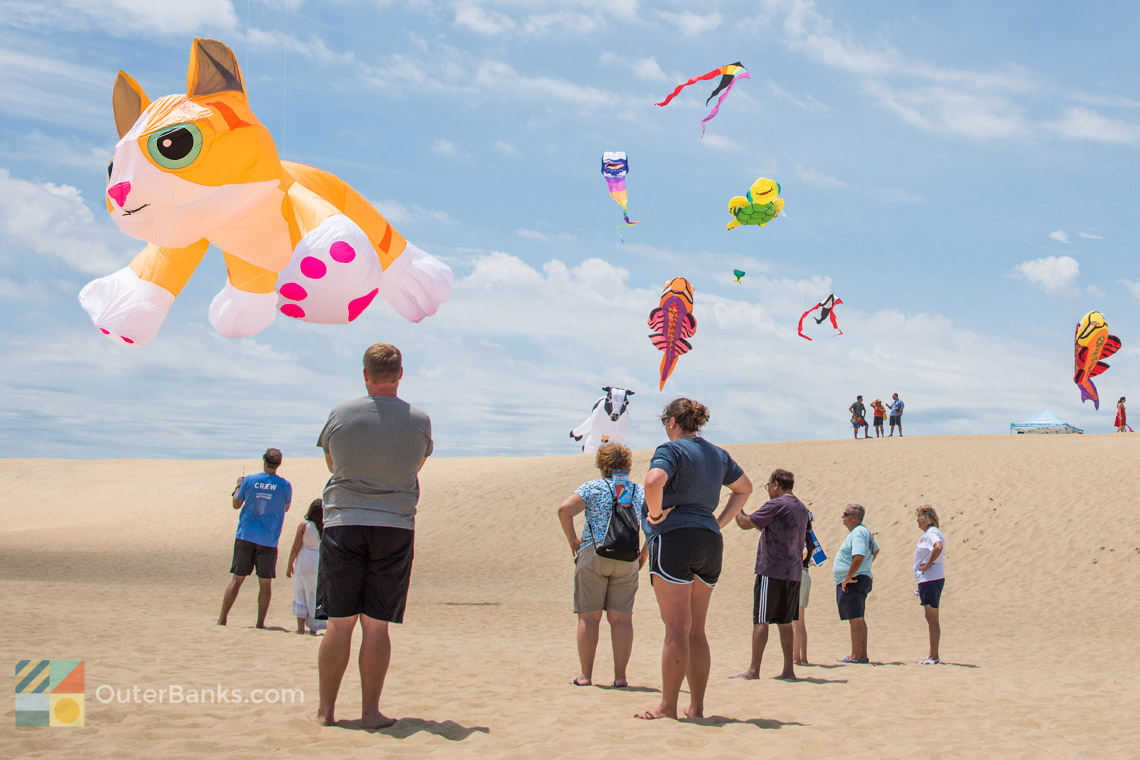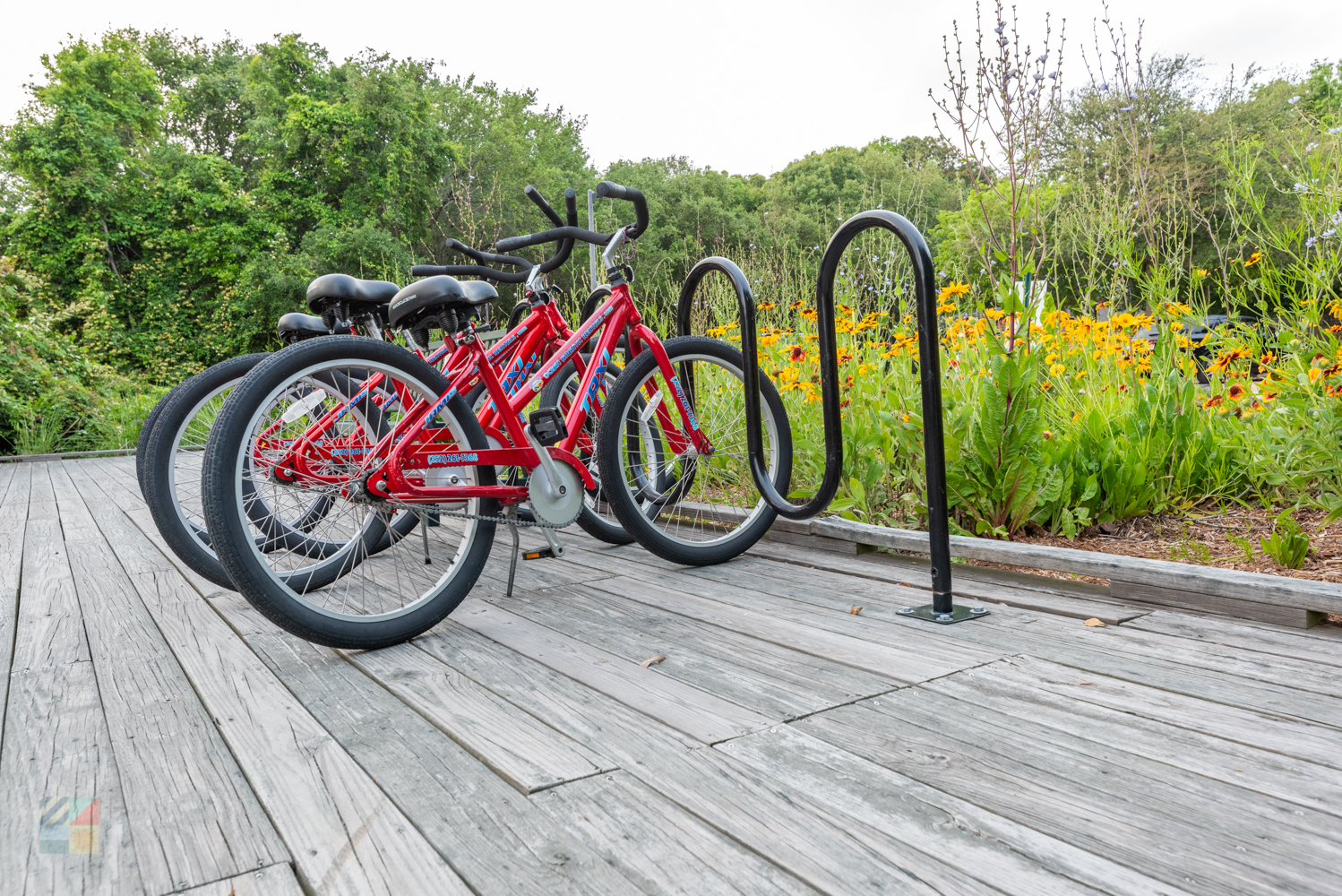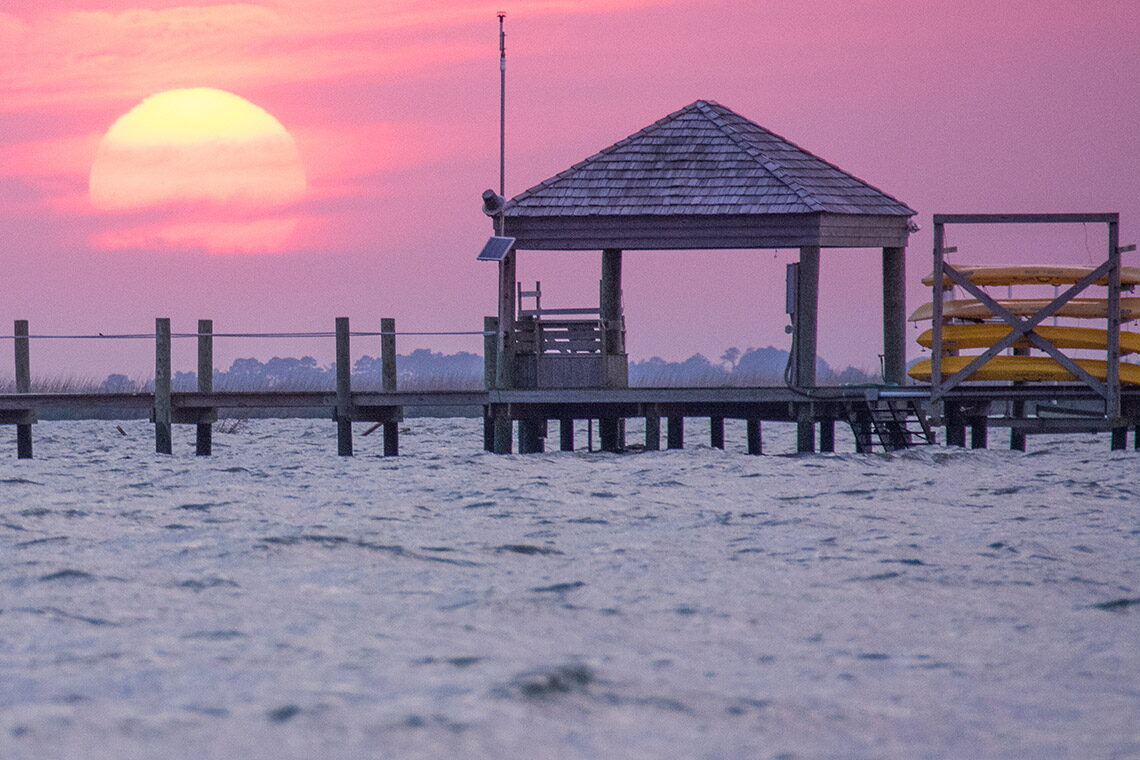The Albemarle Sound is one of the most unique sounds on the Outer Banks as it gradually transitions from a fun saltwater playground bordering the beaches to a series of mainland estuaries and streams that wind deep into the heart of North Carolina and even Virginia. Originally serving as an essential transportation route for the first colonists, the Albemarle Sound today is a mixture of fun and function, providing central Outer Banks vacationers with miles of waterfront terrain to play in, while also providing a habitat for countless species of wildlife.
If your next vacation requires a bit of soundfront exploration, or if you simply love a fantastic view from the Inner or Outer Banks, plan a visit to this remarkable body of water. Chances are if you're staying anywhere close to the central Outer Banks or northeastern mainland North Carolina, you'll be a shell's throw away from the expansive Albemarle Sound.
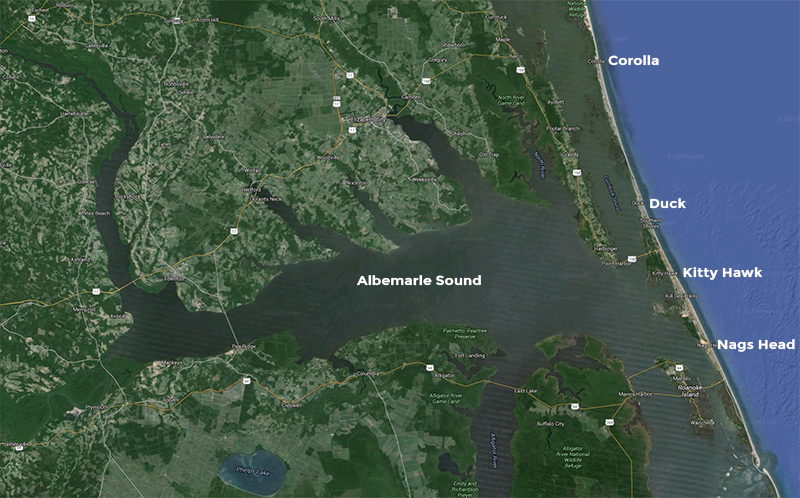
Geography of the Albemarle Sound
Virtually every stretch of the central Outer Banks and mainland northeast NC is close to the Albemarle Sound. This body of water literally stretches hundreds of miles and is one of the longest estuaries in the state, leading, eventually, into a number of rivers, specifically the Roanoke and Chowan Rivers, both of which extend north all the way into Virginia.
The eastern borders of the Albemarle Sound provide soundside barriers for the majority of the central Outer Banks towns, from Kitty Hawk to Nags Head, and connects to both the Croatan and Roanoke Sounds which buffer Roanoke Island. Though technically not very long, this sound is exceptionally wide and feeds East Lake in Dare County mainland, Bull Bay near Columbia, NC and Swan Bay on the outskirts of Plymouth, NC. Essentially, the sound is easily more than 50 miles wide before it even begins to connect to several major rivers, and as such, it can be admired and enjoyed by visitors staying along the beaches, as well as folks who are staying in the heart of the Inner Banks.
Visitors who are travelling to the Outer Banks from the western part of the state via US 64 will essentially cross the Albemarle Sound, (or rather bodies of water that are directly connected to the sound), twice before they ever reach the beaches. The first crossing is a small, scenic bridge in Columbia, NC and the second is the sprawling, 5+ mile Alligator River Bridge which stretches across East Lake.
Travelers from the north on US 158 will also border the sound as they head south along 158, and inevitably cross it as they drive across the Wright Memorial Bridge into the heart of the Outer Banks.
Because the Albemarle Sound basically borders hundreds of miles of mainland North Carolina, visitors will notice plenty of subdivisions and communities named after the body of water itself, and featuring spectacular views and waterfront access, both on and off the beach. From the small Outer Banks town of Colington Harbour which is surrounded by the Albemarle Sound to the busy mainland town of Elizabeth City, there is seemingly no stretch of this coastal area that does not have access to the salty sound waters.
As a result of the Albemarle Sound's expanse, and the variety of regions that connect to it, a variety of different habitats, ecosystems, and landscapes can be found adjacent to the sound's borders. On the Outer Banks, visitors will enjoy expansive soundfront beaches and watersports or boating launches that lead out to miles of open water, while further inland, the narrower portions of the sound give way to expansive wetlands, marshes, and even salty swamps that run wild with different species of birds, amphibians, reptiles, fish and mammals.
With estuaries and branches that cut into virtually every region of the eastern half of the state, and miles of open water in between that are easy to explore by just about anyone with a boat and a sense of adventure, the Albemarle Sound is clearly one of the Outer Banks' largest and most far reaching watery attractions.
History of the Albemarle Sound
Long before the kiteboarders and windsurfers of the Outer Banks discovered the possibilities of travelling across the open sound waters, centuries of both Native Americans and explorers had considered the Albemarle Sound as a vital means of transport.
The Native Americans who were congregated in small clusters throughout the area, (namely Algonquin speaking tribes), had taken to the sound waters in dugout canoes to both access other regions for trade, and head to the local fishing holes to trap and collect enough fish to feed a village.
By 1586, the Albemarle Sound had been discovered by European explorers as well, and these early navigators explored the entire length of the sound, mapping out portions of the East Coast that could potentially be colonized. Half a century later, major settlements in Virginia began to branch off and head south, following the rivers that intertwined with the Albemarle Sound, and setting up new communities along the way. These colonies would grow into farming and trading ports, and not long after, the Albemarle Sound became one of the most important waterways in the country, allowing hundreds of trading ships to exchange West Indies goods for lumber, seafood, and the area's richest product, Tobacco.
In 1663, the Albemarle Sound became an official portion of the "Province of Carolina," granted by King Charles II of England, and ownership was split among the eight Lords Proprietors who governed the region. The sound was effectively named after one of the original eight owners, George Monck, also known as the 1st Duke of Albemarle.
The colonies around the region, which were becoming very successful thanks to both the thriving trading industry and the rich farmlands, continued to grow and as a result, the need for more transportation soon became apparent to accommodate the large population. The communities along the Albemarle Sound were separated from each other via miles of water and marshlands, and so as early as the 1730s, ferries were put into service to provide transport from one sound bordering area to another. These ferries were vital for the small communities, and many remained in serviced for well over a hundred years. (For example, a ferry which connected the small towns of Edenton and Mackeys in North Carolina ran for almost two hundred years, from 1734 to 1938, until it was finally replaced with a bridge.)
As more ports opened up along Virginia and the Chesapeake Bay, and southern North Carolina by the Cape Fear River, the thriving port towns stalled and overall growth declined. However, while the trading industry dwindled, fishing became more and more popular as local farmers discovered the abundance of seafood that had allowed the original Native Americans to thrive.
Beginning in the 1700s and early 1800, plantation farmers began to "farm" the waters of the sound by dropping huge nets in the water in the late spring - nets which sometimes stretched out to a mile or even more wide. Shad, striped bass, and herring could all be easily landed, and many of these catches were packed and shipped off to other communities, or even sent across the ocean to England and other European countries. Eventually, recreational fishing would take over the area, and the waters of the Albemarle Sound became nationally known as one of the best striped bass fishing locations in the world.
Eventually, the Albemarle Sound would become severely overfished, depleting the supply so greatly that the fishing industry slowed to a halt as well. The good news is that with the trading and fishing industries more or less dissipated, the regions surround the Albemarle Sound remained small, attracting residents for their small-town feel, and even isolated locations.
Today, a handful of waterfront communities have been established along the Albemarle Sound-bordering mainland, attracting year-round residents and occasional visitors alike, while the number soundfront homes and accommodations along the Outer Banks have sky-rocketed in the past 30 years. In the end, the Albemarle Sound, which was once the country's premier means of transport, and then its best regional fishery, ending up being one of its most visited and admired bodies of saltwater. While the sound may not serve many commercial uses anymore, hundreds if not thousands of visitors enjoy it every year via a leisurely boat ride, a kayaking or windsurfing adventure, or just a sunset along the back deck of a vacation rental home.
Visiting the Albemarle Sound
Obviously, with so many regions of the Outer and Inner banks connecting to the Albemarle Sound, visitors will find ample ways to explore this enormous body of water.
The easiest way is by simply driving across it, and virtually every vacationer that heads to the Outer Banks from western North Carolina or the northern region of the country will catch a glimpse of the Albemarle Sound en route to their OBX vacation. US 64 is probably the most scenic, as the Alligator River Bridge, which crosses the portion of the sound that feeds into East Lake, is a beautiful section of the drive that provides northern and southern views of this expansive body of water. Be on the lookout for passing boats, as this bridge also serves as a an integral passage for a number of commercial and recreational mariners, and when a boat skims through, traffic pauses while the drawbridge opens its gates to let the vessels pass. If you happen to cross the bridge while the drawbridge is opened and the traffic pauses, feel free to step out of the vehicle and take a quick look around. The views are simply incredible, and the salty air blowing across the sound will surely put any visitor into a vacation state of mind.
Inner Banks visitors can also explore the Albemarle Sound via a number of soundfront communities found all along eastern North Carolina. Many of these communities are private residences with exclusive sound access, although public boat docks and launches can often be found within some of the larger towns, like Plymouth, Elizabeth City, and even Columbia.
Outer Banks vacationers will have a much easier time exploring the Albemarle Sound waters, as multiple communities, public parks, and refuges all buffer the open sound waters. The Kitty Hawk Woods Coastal Reserve, the Jockey's Ridge State Park, and the public sound beaches of Colington Harbour all border the Albemarle Sound, and visitors will find ample places to park, launch, and spend a day exploring the open waters.
The best way to cover the expanse of the Albemarle Sound is via a boat, and there are several Outer Banks boat launches, especially in Kitty Hawk Woods and at Jockey's Ridge, that will have mariners sailing across the open water within minutes. If you bring along the skiff to take out on the water, be sure and bring the fishing poles along too. Though modern estimates conclude that the fish population has dwindled by 70% since the Albemarle Sound's heyday as an 18th and 19th century fishery, there are still plenty of great saltwater catches to reel in. Be on the lookout for bass, mullets, blues and even sheapshead, which are found along the marshy islands that lie in between the Outer Banks and the mainland, as well as the large portions of unobstructed saltwater.
Visitors who don't have access to a motorized boat can just as easily bring or rent a kayak and enjoy a self-guided tour of the waters as well. Portions of the Albemarle Sound, especially around the Kitty Hawk Woods and Colington areas, border large, grassy islands which are prime birding locales. These islands, (which are mainly comprised of marshlands), make up a collection of trails that circle around Kitty Hawk Bay, and are a challenging but beautiful paddle around some of the Albemarle Sound's most scenic and naturally wild Outer Banks terrain.
Vacationers who want to access the most gorgeous portions of the Albemarle Sound, or who feel more comfortable with an experienced guide, also have the option to book a kayaking eco-tour to explore the area in depth, and to visit some of the sound's most secretively scenic regions.
The Albemarle Sound has also become a popular destination for watersports lovers of all genres, particularly kiteboarders and windsurfers who require a large body of water to sail across at full-speed without fear of obstruction. The Albemarle Sound provides an ideal playground for these sports, with limitless amounts of open water extending for miles in every direction. Launching points are located in both private rental home communities and at a number of parks and refuges, such as the Jockey's Ridge State Park. Newcomers to these sports will also find a number of lessons available as well as weekly rentals to help get them launched and ready to enjoy the lure of the Albemarle Sound.
Of course, one of the most relaxing ways to enjoy the scenery is to pack up a picnic basket, grab a beach towel, and settle in for an incredible sunset. With the mainland barely, if ever, visible from the Albemarle Soundfront shoreline, visitors will find they can sit back, relax, and enjoy endless miles of water views with their toes buried in the sand or swinging off a waterfront dock. Again, Jockey's Ridge State Park and the Kitty Hawk Woods are both ideal places to catch the show, although many soundfront communities and side streets in Nags Head, Kill Devil Hills, Kitty Hawk and Colington have soundfront boardwalks or beaches where visitors can meander down to the waterfront and enjoy the view.
Clearly, the options for enjoying the Albemarle Sound are far reaching, stretching from the sandy shores of the Outer Banks to the busy downtowns of Elizabeth City of Columbia, NC. The best part is that all a central Outer Banks vacationer has to do to enjoy the scene is to grab a beach towel and head west. With miles of waterfront, and ample new watersports and activates to enjoy, the Albemarle Sound is an Outer Banks destination that is as accessible as it is awe-inspiring.
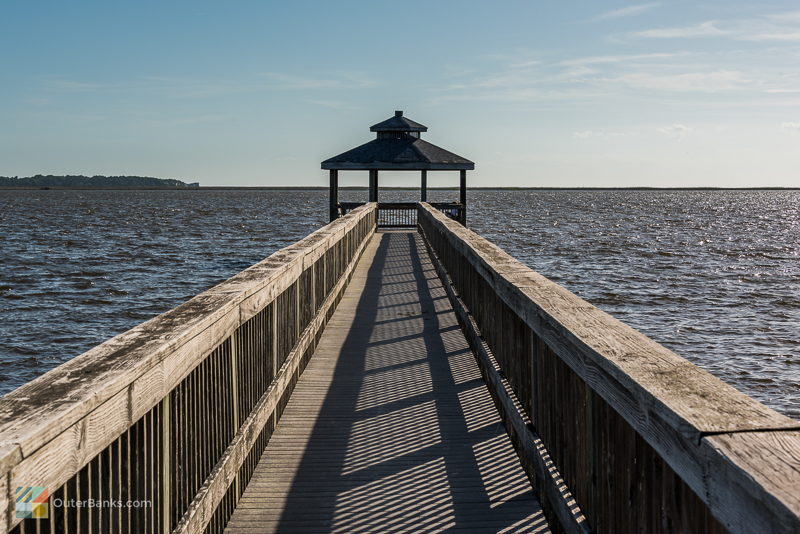
Tips and Tricks for visiting the Albemarle Sound
- Want to wind down every day of your vacation with a waterfront sunset? Then when planning your vacation, consider reserving a vacation home that borders the Albemarle Sound. The property management companies on the Outer Banks have ample options available, ranging from the small residential communities of Colington to the beachy subdivisions bordering Nags Head and Kitty Hawk Bay. Many of these homes have fantastic views, waterfront facing decks, and even docks or small boat launches, allowing your vacation to simply revolve around the water.
- Considering a long-term move to the Outer Banks region? Then scope out the communities of the Inner Banks that border the Albemarle Sound. There are a number of new developments popping up along mainland Currituck County and the eastern portion of NC that cater to second home owners, retirees, and anyone who loves the water. With sprawling Albemarle Sound views in addition to community sound access, boating access, and even beaches or parks, these residences are ideal for visitors who want their lifestyle to revolve around the water, full-time.
- Nature lovers will want to hit the trail, literally, and discover the parks, reserves and refuges that border the Albemarle Sound. On the Outer Banks, Jockey's Ridge State Park and the Kitty Hawk Woods Coastal Reserve both feature nature trails that wind out to breathtaking Albemarle Sound overlooks, bordered by scenic marshes and patches of maritime forest. On the mainland, die-hard hikers and adventurers may want to explore the rustic trails of the Alligator River National Wildlife Refuge, a huge parcel of mainland Dare County that borders both the Albemarle and Croatan Sounds, and covers well over 20 miles of undisturbed natural landscape. Every region has its own unique parcel of soundfront tucked away and relatively undiscovered, so hikers, birders, and nature lovers of all varieties should be sure they go forth and explore.
- Heading to North Carolina via US 64 or 158? Make the trip part of the fun and make a few stops along the way for some scenic views of the Albemarle Sound from an "in-lander's" point of view. A number of small towns located along these busy vacation routes, like Columbia, NC which was recently featured in Our State magazine, have scenic downtowns, sprawling waterfront Visitors Centers, farmer's markets or vineyards, and a number of other surprising attractions that honor life on the water, but are well off the beaten path.
Central Outer Banks vacationers may be drawn to the coastal area by the ocean, but they will wind up enchanted by the Albemarle Sound. With multiple ways to enjoy this sprawling body of water, and plenty of scenic drives and routes that cross its path, it's almost impossible not to encounter this expansive sound en route to and from the Outer Banks. That being the case, visitors are encouraged to pause, relax, and stay a while, and enjoy the world of fun waterfront activates the Albemarle Sound has to offer. Tune in for a waterfront sunset, or take the boat out on a grand exploration of eastern NC. The Albemarle Sound is clearly hard to miss, and hard to avoid, and Outer Banks lovers wouldn't have it any other way.
-
OBX Wedding Fest
January 16th, 2026 - January 18th, 2026 -
Hatteras Island Oyster Roast
February 7th, 2026 1:00 PM - 4:00 PM -
First Friday in Manteo
March 6th, 2026 6:00 PM - 8:00 PM
The Ocracoke Island Lighthouse may not be the most imposing of the Outer Banks lighthouses, but as North Carolina's oldest lighthouse in operation, (and the second oldest in the United States), it is certainly one of the most beloved. At just 65...
Wine, beer and cheese lovers will love TRiO, an exciting retail and tasting destination in Kitty Hawk. Both a gourmet retail wine, beer and cheese shop as well as a bistro with a wine bar and tap house, TRiO offers the best of the worlds of...
Outer Banks vacationers may come for the gorgeous beaches, but often they come back again and again for the attractions and activities off the sand. Because of the Outer Banks' mixture of natural landscapes and historical attractions, one of the...
Stop by Nags Head's Ben Franklin at Mile Post 10 on the Bypass where you will find everything you need for the beach! From Clothing, T-shirts and Swimwear to Boards, Chairs, Umbrellas and Tackle. You'll find it all…and of course, we have the...
The Bodie Island Lighthouse, (pronounced "Body") is located just south of the town of Nags Head and Whalebone Junction, where Highway 158, Highway 64, and NC Highway 12 intersect. Visitors travelling towards Hatteras Island can't help but notice the...
Corolla Wild Horse Tours knowledgeable guides will ensure you and your family have a great wild horse tour! Along the way the guides will stop and point out interesting sites and local history and details of the Corolla Wild Horses history. Be sure...
The Outer Banks is known for its breathtaking sunsets. Watching sunsets is a popular activity for both locals and visitors, and there are plenty of photogenic sunset spots to create special memories. Here are the top places to watch a sunset on the...
Gray’s Outer Banks Lifestyle Clothing Company offers the absolute best in Outer Banks T-shirts and Sweatshirts including Champion, Under Armour with "Outer Banks” and Gear! We carry quality fashions and accessories for the whole family...
